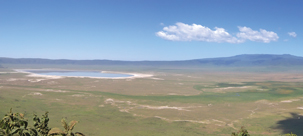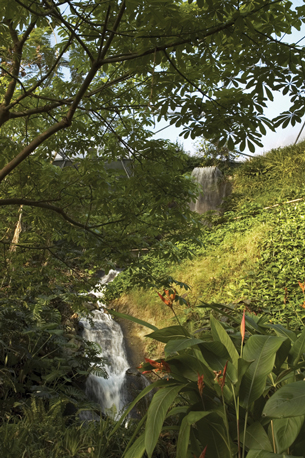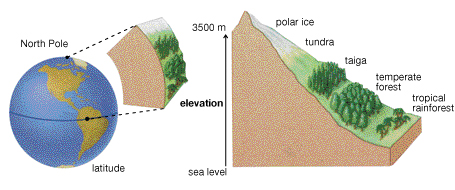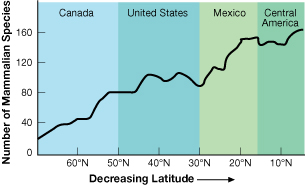Module 3 Intro
1. Module 3 Intro
1.20. Page 2
Module 3—Ecosystem Diversity
 Explore
Explore
 Read
Read
In this lesson you will examine the effects of biotic and abiotic components on ecosystems. Abiotic factors determine where life exists and how it is distributed. Biotic components determine how an organism interacts with other organisms to ensure their survival. If you need to review biotic and abiotic factors, you can review the first chapter of your textbook.
Start Lesson 4 by reading “Climate and Biomes” on pages 93 to 95 of the textbook.
Abiotic factors cause weather conditions that are referred to as climate. The unequal heating of Earth’s atmosphere causes major climate zones and produces air and water currents that interact with physical features (mountains, islands, and lakes) to produce rainfall patterns. All of these and other factors create large areas with similar environmental conditions called biomes.

© POZZO DI BORGO Thomas/shutterstock

© Kevin Britland/shutterstock
climate: the average weather (taken over a long time period) for a particular region
biome: a regional group of distinctive plant and animal communities that are adapted to the region's physical environment
 Self-Check
Self-Check
SC 1. What is the relationship between temperature and precipitation and the abundance of life in a terrestrial biome?
SC 2. Why is there uneven heating of Earth?
SC 3. What other factors besides precipitation and rainfall determine abundance of photosynthetic organisms?
SC 4. There are transition zones between biomes. True or False.
 Self-Check Answers
Self-Check Answers
SC 1. The higher the temperature and the greater the amount of precipitation, the greater abundance of terrestrial life. Very high temperatures can inhibit growth.
SC 2. The Earth is spherical. Therefore, sunlight strikes Earth unevenly. The equator receives the most direct and intense light. As you move toward the poles, sunlight is spread over larger areas and is more diffuse.
SC 3. Topography, altitude, latitude, and temperature determine the types and abundance of photosynthetic organisms that can survive in a biome.
SC 4. True.
 Watch and Listen
Watch and Listen
Perform a web search to find videos or flash animations on a variety of biomes. You may use a variety of sources. Possible keywords include “teacher’s domain” and “Hippocampus.”
Use a chart to record the abiotic factors that help to create the characteristic climate in three different biomes. At least one biome should be aquatic.
 Self-Check
Self-Check
SC 5. Complete this Self-Check exercise about biomes.
 Read
Read
As you hike up Mt. Athabasca in Jasper National Park, you notice the temperature beginning to drop. There is a reason that taiga is the Russian word describing a cold mountain forest. As you climb, you encounter the taiga biome just as you would as you move from the equator toward the North Pole. The change in biomes as you increase in altitude is similar to the change in biomes that occurs as you increase in latitude toward the North Pole. This phenomenon is shown in the following diagram.

There are fewer living things the closer you get to the mountain summit. Fewer organisms are able to survive at the high altitude and low temperatures. The same decrease in the numbers of species occurs as you move from the equator to the North Pole. This is due to the decrease in average temperature and the decrease in the average precipitation that occurs as you move toward Earth's poles. The following graph shows that as you move closer to the equator in Central America, there are more species of mammals.
